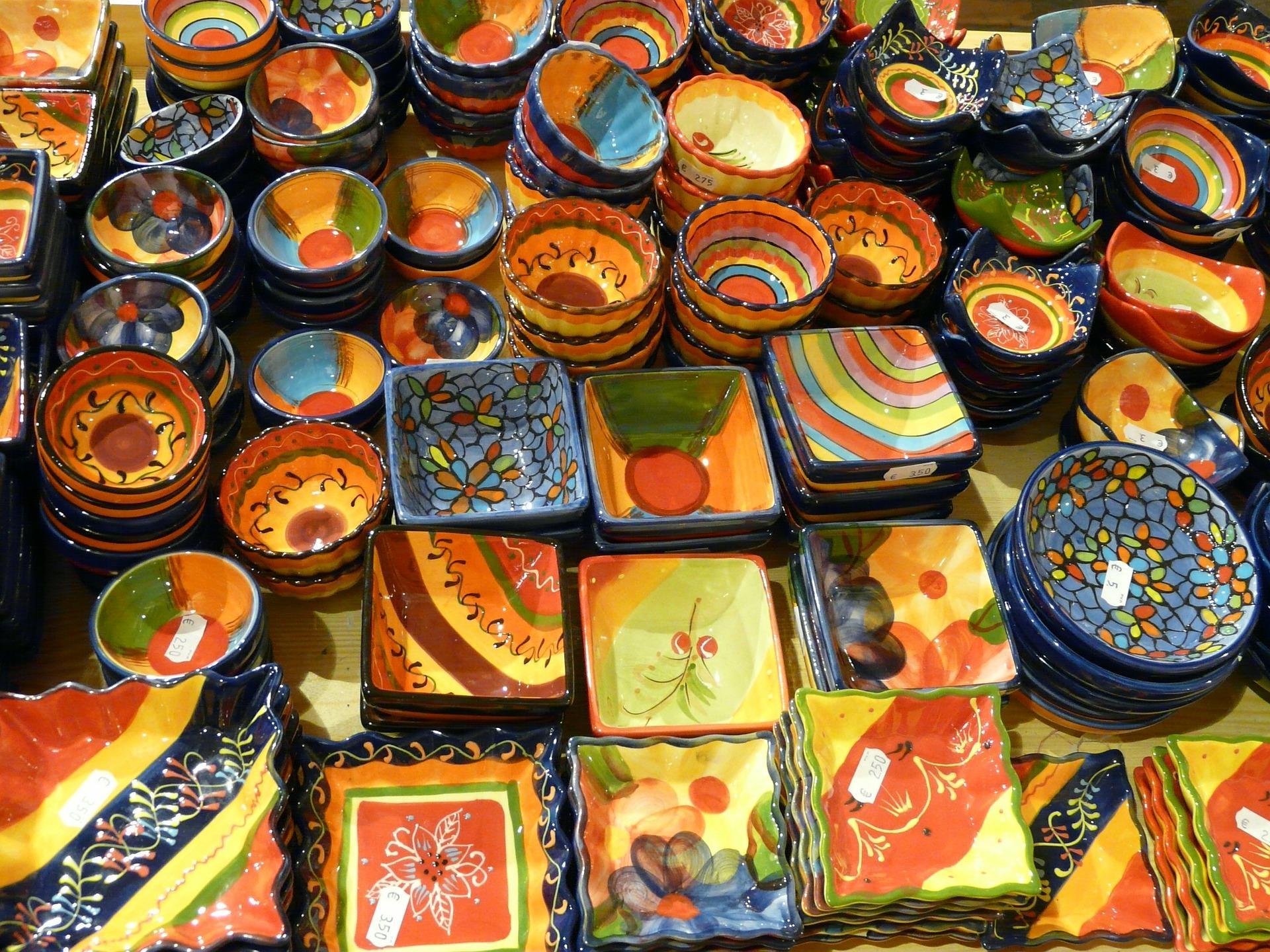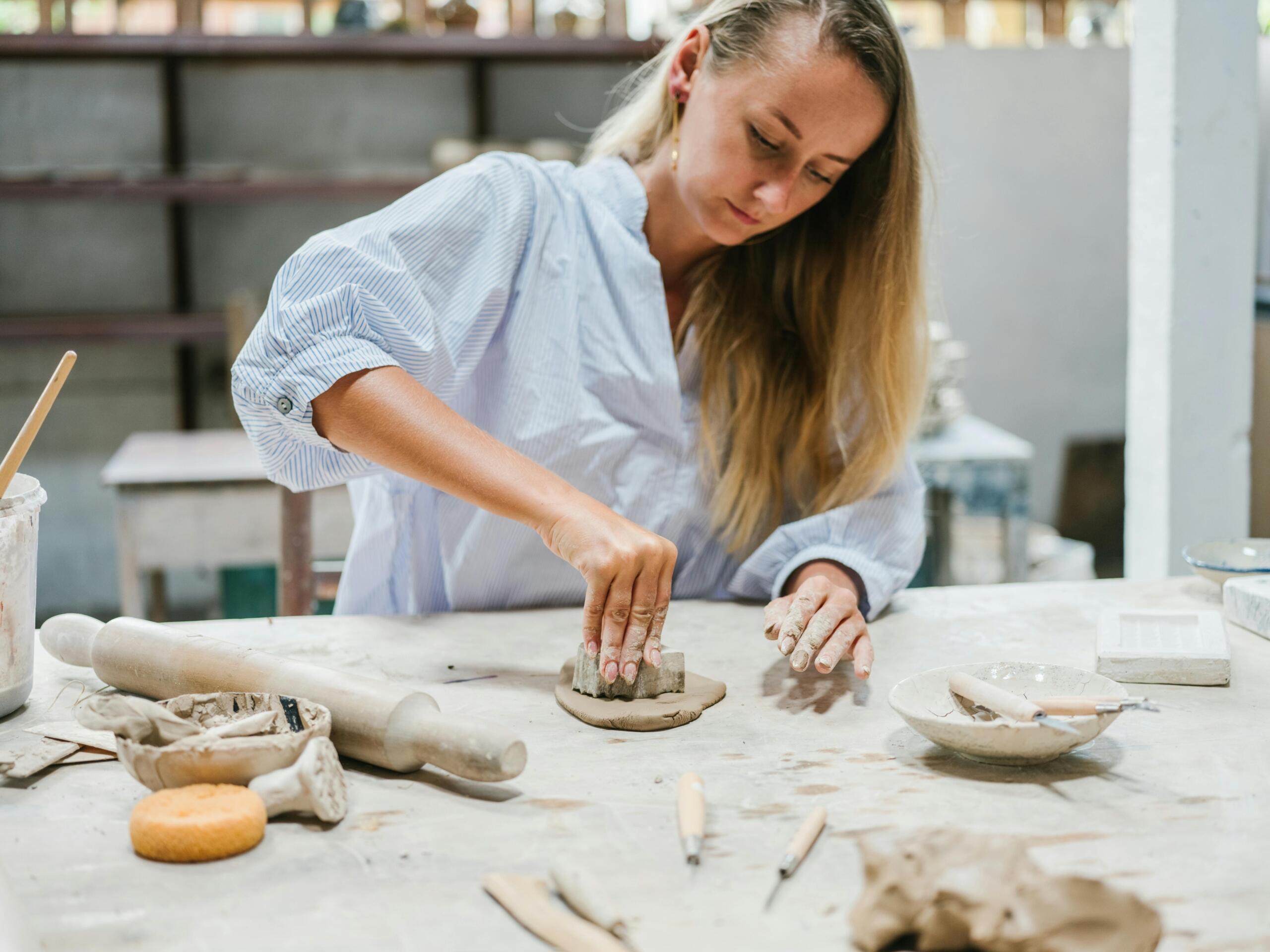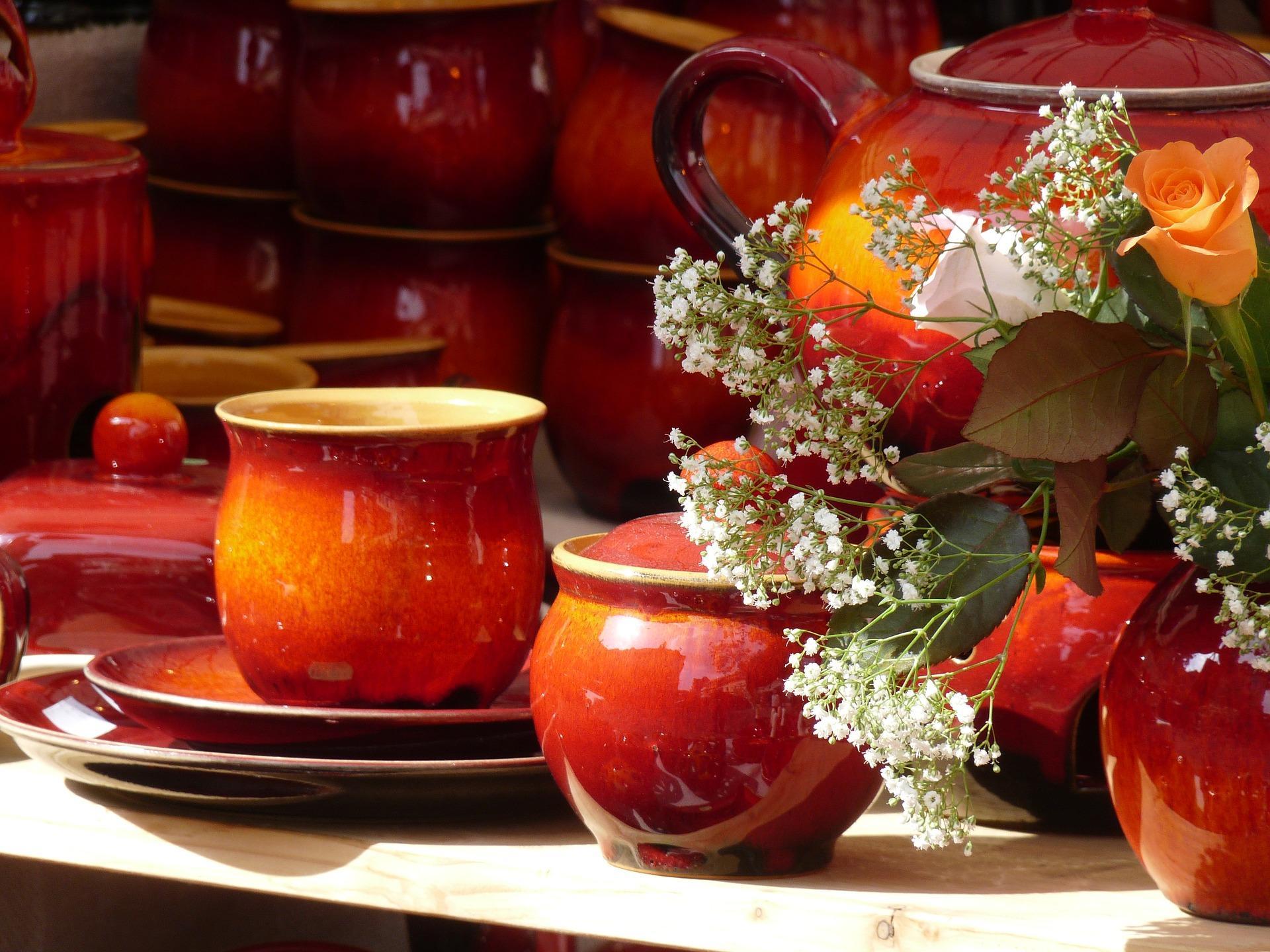Before Indiana Jones captivated our imagination with his tales of derring-do, archaeologists mainly laboured in obscurity – both in the literal and figurative sense.
Sure, when a great find is made, such as Tutankhamun’s tomb or the greatest discovery of clay sculpture ever made, the Terracotta Warriors were found, those discoveries make headlines around the world.
But when a graduate student on a dig finds pottery shards... that’s not necessarily earth-shattering news.
Pottery evolved alongside civilization. It existed long before the world war and has been a useful resource since the ancient days. With its bright outlook for the future, we can all agree this art is here to stay.
Although rarely publicized, those finds invariably point to pottery-making being one of the most ancient forms of art, right up there with cave-painting.
Why did early humans make pottery? How did they discover pottery clay and figure out that it could be used to make things?
More importantly: how is it that this ancient art, born of necessity, is currently enjoying a resurgence?
From Australia to the Americas and, of course, in our own lovely country, clay artists are keen to promote their craft by offering adult classes in pottery as well as the occasional kids’ ceramics class.
You have to be careful mixing kids with clays; the high-temperature kilns alone make it a risky proposition!
If you’re reading this, you must have some interest in the materials and processes involved in ceramic arts.
As always, your Superprof is fully supportive of your endeavours.
Whether you’re aiming for your Bachelor of Fine Arts or looking to become the artist in residence in your home-built ceramic studio, we now provide you with all of the information you need to get started.
Wash your hands, shut off your kiln and follow along!


Facts About Ceramics You Should Know
Pottery was a big shot long before any other humankind's craft. The creation came out as an accident. In ancient times, people would move water from one point to another using a handwoven basket. Whenever the basket arrives, it comes with clay that takes the shape of the basket.
Nowadays, clay takes any form of design. It is now used for artistic purposes. Most of all, its existence has impacted the creative economy by far.
Common Facts and Myths about Ceramics
Before delving into ceramics, here are some facts and myths you should know:
- Pottery evolved with civilization
- Clay takes three forms: earthenware, stoneware, and kaolin
- It isn't pottery until it is heated
Myths about Ceramics
Most people develop their principles when it comes to pottery production. As a result, they take losses.
The following are myths about pottery to consider;
- You don't need to take a course
- You can start right away
These myths are more like hindering blocks. You need the business courses you can lay your hands on. Don't forget; patience is an important virtue for pottery learning.
What Are Ceramics?

We tend to think of ceramics in terms of what we’re familiar with: ceramic tile, ceramic vases or delicate ceramic boxes (those are called raku, by the way).
Seldom does the average person consider the full scope of things that are ceramic; nothing illustrates that point better than the insulators we see on electrical poles.
Most people make a distinction between glass and ceramic insulators; the fact is, they are both ceramic.
Likewise, most make a distinction between pottery – say, the terra cotta pots in the garden, porcelain fixtures in the bathroom and the bone china used on special occasions. Here again, they are all ceramic.
Any substance that is inorganic and non-metallic is considered ceramic.
That means that the bricks your home is built of and the mortar that holds them together; the windows you look out of (provided they are glass, not some polycarbonate compound), the fixtures in your bathroom and maybe even your kitchen... they are all ceramic.
Ceramics have many uses in fields of science and engineering, too. Consider reusable launch systems such as the US’s space shuttle or reusable space capsules.
Those components must be protected from the extreme heat of re-entry into our atmosphere; that is why they are protected with heat-resistant ceramic tiles.
Admittedly, space travel and re-entry is a fairly limited proposition; it is much more common to board a jet and fly from one country to the next than fly away from our planet altogether.
Would you be surprised to know that ceramics play an integral part in the workings of jet engines?

What Equipment Do You Need for Ceramics Lessons?

Most people, when considering ceramic art generally don’t consider archaeology, building techniques or the transition temperature of re-entry; they just want to tap into their creative process and express themselves through the visual arts.
Getting into the world of ceramics can be fun if you have full knowledge of the art. In the earliest days, around 6000-4000 BC, the first pottery wheel was invented. Since then, throwing has become a piece of cake.
Pottery expands beyond satisfying utilitarian purposes to fulfilling modern artistic purposes. Now, we have tons of useful tips and pottery equipment. Even so, the design has evolved, and creativity speaks louder. First, you must consider getting a top-notch pottery wheel.
Well begun is half done. Aristotle
Most who stand by that adage would start their venture into studio art by being thoroughly prepared: the right tools, the right equipment and the right materials and the right attitude – we all know attitude counts for a lot!
Believe it or not, to properly prepare yourself for lessons in pottery, all you really need is an openness to learning and a can-do attitude.
As far as equipment and materials, to make even the simplest pot out of clay, you will need:
- A potter’s wheel: you don’t have to have one but it sure makes pottery-making faster and easier!
- A kiln: you may choose an electric kiln, a gas kiln, a wood kiln or a raku kiln
- Clay: there are many types and grades to choose from
- Water
It is remarkable that, over the millennia that humans have been working clay – the oldest figurines, found in the Czech Republic, have been dated to 45,000 years ago, very little has changed.
True, we have nifty clay tools and it would be a good bet that those ancient potters, coiling their rolls of clay would probably be amazed at the convenience of pottery wheels.
But you don’t need to bring any tools or clays to begin making pottery in class. You will likely be asked to bring an apron, though, and to dress appropriately.
Find art classes Toronto here on Superprof.
How to Use a Pottery Wheel
Working with a pottery wheel requires care and utmost knowledge. The market holds different pieces of equipment for different designs. Before anything, you must know the different types of pottery wheels for beginners, take a few lessons, and learn how to use one.
Here's a basic guide:
- Clean the center of your bat with a sponge
- Seal the corners of the clay to the bat by turning the wheel pressing down the edges until it sticks completely to the surface
- Add some water to your hands, increase the wheel speed and throw with your elbows locked to your legs
- Start coning up (Push the clay up by pressing down your left hand and using your right hand as support)
- Level the clay top and cone down
- Smooth out the clay with your fingers to compress the bottom
- Raise the walls following your preferred design
- Sharpen out the top
How to Choose the Right Slab Roller

Like clay, slab rollers are often worth the expenses. The problem lies in choosing a suitable one. Here's a step-by-step process to follow:
- Know the size you intend to work with
- Consider the type of clay used
- Test a few slab rollers
Pottery wheels come in different sizes and shapes. When buying one, ensure you assess the body components.
Find out what else might be asked or expected of you in your first few ceramics classes...
Find various online art courses here on Superprof.
Where Can You Find Ceramics Classes and Workshops?
As mentioned earlier, art ceramics are enjoying a new wave of popularity all around the world. Everywhere, people are turning out earthenware, glazed or unglazed, to use in their gardens or serve as accent pieces.
In light of that, could finding classes be difficult? That depends on several factors.
If you live in a city, it would be much easier to find an art center offering pottery lessons than, say in the Scottish Highlands.
On the other hand, if you live in Scotland, you might seek out the Scottish Potters’ Association to connect with experienced ceramic artists; you may even become a member of their group!
One of the first questions they’re bound to ask you is: why do you want to learn pottery? That question is at the heart of finding the best ceramics classes.
If you’re only just beginning to work with ceramic materials, beginner’s classes at an art studio or open classes at your local college of art would work well. There, you could learn all of the basics:
- the different types of clay (and what they’re used for)
- the different equipment and tools a clay artist uses
- properties of kilns – high temperature, low temperature, inner diameter and so on
- wheel throwing: how to work with a pottery wheel
Ceramics Arts are highly recognized in the academic field. In places like Vancouver, taking pottery lessons is the new normal. So many institutions in such regions offer educational courses.
Even better, you can find several enrollment programs online. Here are a few toppers:
The Pottery
Located at the west end of Toronto, The Pottery has evolved from a mere pottery studio to impacting thousands of lives with fruitful pottery lessons. The studio produces elegant ornaments, which you can view on their website. It also offers 10 weeks of practical lessons, a 2-hours workshop tutorial for adults, and a summer camp for children—view website.
The New Brunswick College of Craft & Design (NBCCD)
With 80+ years in the making, NBCCD has impacted thousands of life-changing designers and artisans across the country. The firm helps learners recognize the power of creativity with adequate resources. It offers courses for pottery lovers and helps shape the future of passionate individuals. NBCCD also has an impact on the creative economy. It's one of those places with the right pottery resources. The best part is, enrolling is super quick and easy.
Find art classes here on Superprof.
Cottage Pottery Studio
For the love of clay, this institution can cross any border. Cottage Pottery sets the path right for beginners. It has everything you need. The company even offers a private clay event with ten spots available for more intense learning. Once you become a member, you are open to all potters' equipment and space needed for work. If you prefer personal learning, this is for you.
In fact, pottery artists recommend taking a wheel throwing class because it can be quite tricky getting the hang of working with a pottery wheel.
Conversely, if you’ve already met with a bit of success in turning out stoneware creations, you might keep an eye out of workshops that address a skill you’ve not yet mastered.
Essentially, finding pottery classes and workshops really boils down to what you need to further your art education...
Find various art classes for kids here on Superprof.

Getting Started with Pottery Lessons
You may be a fan of the classic film, Ghost, in which Demi Moore’s character sits half-clad at a pottery wheel in the middle of the night.
The vase she’s making grows, grows, grows taller until Sam sits behind her. She gets distracted, the vase flops...
In that story, floppy vases are of little consequence. So, for that matter, is pottery.
On the other hand, for the perhaps overeager ceramist, clay creations that continuously flop can a source of frustration. Plenty of people have gotten discouraged over their clay not becoming what they want it to be!
Ceramic artists all aver: check your expectations.
The Perfect Pottery Ideas for Beginners
Building a pottery career isn't a one-day job—one requires full knowledge of the craft. And to become good with clay, you must be patient and ready to learn.
Before anything, ensure you are passionate about pottery. As a beginner, you might not get everything right on your first trial. Passion is what keeps you going. When you're passionate about clay, the urge to take potty lessons will rise. And when it does, your creative mind unleashes the craftsman in you.
Why You Need Motivation for Pottery Lessons
Anyone who desires to learn pottery must also be willing to take the process step-by-step until a final stage is reached. Here's why you need motivation for such lessons:
- To unleash the creativity that lies within
- To become a professional
- To bring in revenue
- To master the art
Why You Need the Patience to Learn Pottery for Beginners
Taking pottery lessons is the new normal, and it's great that you've chosen to opt for it. As said earlier, the world of ceramics is full of unique explorations. Every professional potter spent time learning about the craft, moving from phase to phase, and understanding more of the process. The following reasons are why you need the patience to become a professional potter:
- Pottery learning is broad
- Mastering the art requires experience
- Pottery learning is a step-by-step process
How to Excel in Your Pottery Beginner Class
The only way to become a successful potter is to stick to the craft. Here are a few tips for starters:
- Be ready to explore
- Spend time studying pottery materials
- Join a reputable community
- Be persistent
It would be safe to say that hardly anyone sitting at a pottery wheel met success the first time out. It takes patience and skill to turn out a flawless piece.
Your instructor will no doubt make pottery-making seem very easy but there is a measure of skill involved even if it seems effortless when done by a pro.
Note: You can take art classes near me on Superprof.
Knowing exactly how much pressure to exert on the clay as it turns, how often to moisten it and when to stop before the piece is ruined all take time to learn.
The wonderful thing about clay is that it is so forgiving! If what you’re working on doesn’t satisfy, you can knead the clay into a ball and start all over again or try something new, maybe even experiment a little.
It is important to remember that you’re not going to master pottery or clay sculpture after only a couple of lessons; in fact, the dedicated ceramic artist makes learning his craft the work of a lifetime.
In light of that, if you’ve never thrown a pot – used a pottery wheel, you will have a few things to get used to. A good rule of thumb is to learn one ‘thing’ per lesson, starting with the ceramic material you are currently manipulating.
Your instructor should explain what type of clay you’re working with, what it’s composition is, and what they mean by ‘bisque’.
You will be treated to so much information about ceramics as an art form... why not read our companion article to get fully prepared?
Find various art classes Vancouver here on Superprof.
















